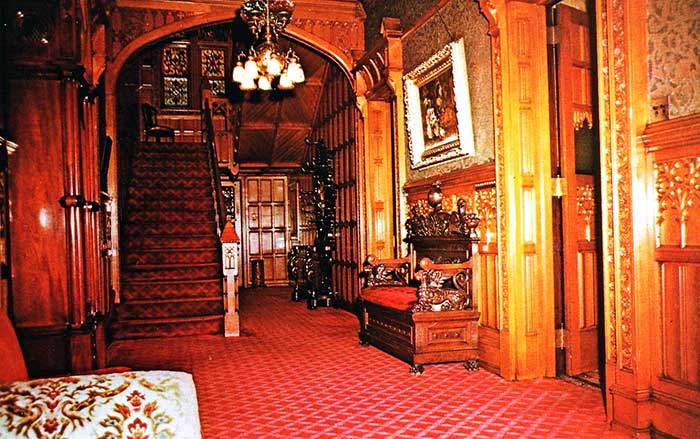

Structurally, the original portion of the building was in good condition the porch needed minor repairs the two-story addition would require demolition and reconstruction to cost effectively retain the square footage and appearance of the building. The building itself has little documentation, but it was apparent that a two-story addition and porch were added to the original two-and-a-half-story structure at some point. We worked with the clients to prepare a study evaluating the existing condition of the Caretaker’s House and the feasibility of restoring it for use as a residence while maintaining a historically appropriate exterior. The playhouse, referred to as the Caretaker’s House, is a six room wood frame structure located west of the mansion. Of the property’s five original outbuildings (greenhouse, playhouse, ice house, apple cellar and pump house), only the ice house and playhouse remain. Now owned by the Borough of Jim Thorpe, the mansion is open to the public as a museum, and along with the surrounding property, is maintained by the Jim Thorpe Lions Club. The mansion is an excellent example of mid-19th century Italianate architecture and remains largely preserved in its original condition. Understanding the costs and scope of work associated with selectively renovating a historic structure was an important first step to enable the owners to make informed decisions in planning their project.Ĭonstructed by Asa Packer in 1861, the Asa Packer Mansion is believed to have been designed by the Philadelphia architect Samuel Sloan and is listed on the National Register of Historic Places.

The report outlined costs for the proposed work, which included restoration of the exterior to its original appearance and modernization of the interior. After architectural and structural review of the building, we prepared a report outlining recommended repairs and a renovation approach to return the structure to use as a Caretaker’s House. We performed a study to evaluate the current condition of the Caretaker’s House and the feasibility of historically restoring and/or rehabilitating it. At one time it served as a residence for the property’s caretaker, but it has laid vacant since the 1990s. The owners of the Asa Packer Museum were interested in restoring one of the property’s two remaining original outbuildings, the Caretaker’s House, which dates back to the late 19th century.


 0 kommentar(er)
0 kommentar(er)
